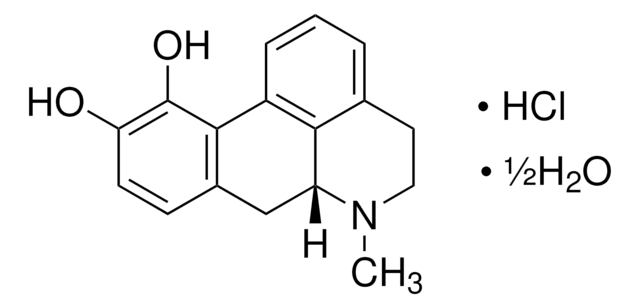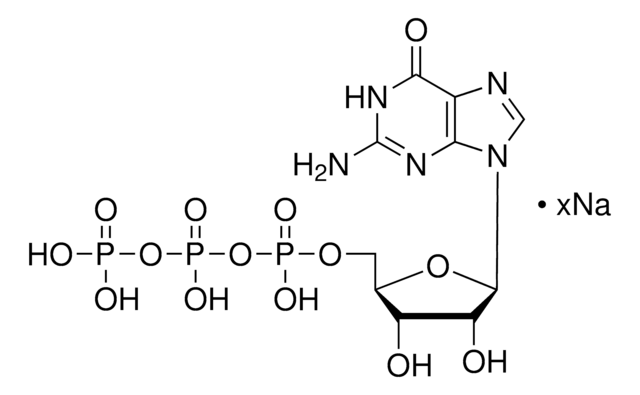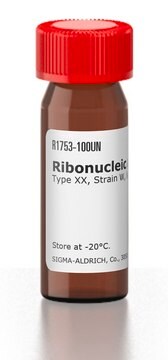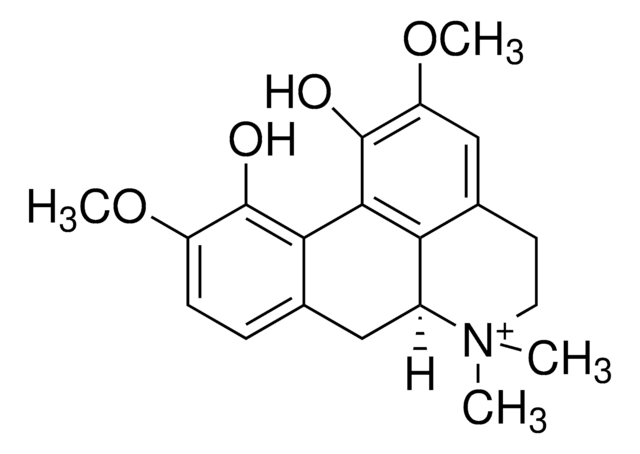A4393
R-(−)-Apomorphine hydrochloride hemihydrate
calcined, ≥98% (with NaOH, titration)
About This Item
Produits recommandés
Niveau de qualité
Essai
≥98% (with NaOH, titration)
Forme
calcined
(Powder to Crystalline Powder)
Conditions de stockage
protect from light
under inert gas
Couleur
white to gray
Pf
285-287 °C (lit.)
Solubilité
H2O: ~10 mg/mL, clear, yellow-green
Chaîne SMILES
Cl[H].Cl[H].[H]O[H].[H][C@]12Cc3ccc(O)c(O)c3-c4cccc(CCN1C)c24.[H][C@]56Cc7ccc(O)c(O)c7-c8cccc(CCN5C)c68
InChI
1S/2C17H17NO2.2ClH.H2O/c2*1-18-8-7-10-3-2-4-12-15(10)13(18)9-11-5-6-14(19)17(20)16(11)12;;;/h2*2-6,13,19-20H,7-9H2,1H3;2*1H;1H2/t2*13-;;;/m11.../s1
Clé InChI
CXWQXGNFZLHLHQ-DPFCLETOSA-N
Informations sur le gène
human ... DRD1(1812) , DRD2(1813) , DRD3(1814) , DRD4(1815) , DRD5(1816)
Vous recherchez des produits similaires ? Visite Guide de comparaison des produits
Application
Actions biochimiques/physiologiques
Mention d'avertissement
Danger
Mentions de danger
Conseils de prudence
Classification des risques
Acute Tox. 3 Oral
Code de la classe de stockage
6.1C - Combustible acute toxic Cat.3 / toxic compounds or compounds which causing chronic effects
Classe de danger pour l'eau (WGK)
WGK 3
Point d'éclair (°F)
Not applicable
Point d'éclair (°C)
Not applicable
Équipement de protection individuelle
dust mask type N95 (US), Eyeshields, Faceshields, Gloves
Faites votre choix parmi les versions les plus récentes :
Déjà en possession de ce produit ?
Retrouvez la documentation relative aux produits que vous avez récemment achetés dans la Bibliothèque de documents.
Les clients ont également consulté
Notre équipe de scientifiques dispose d'une expérience dans tous les secteurs de la recherche, notamment en sciences de la vie, science des matériaux, synthèse chimique, chromatographie, analyse et dans de nombreux autres domaines..
Contacter notre Service technique









